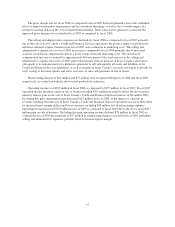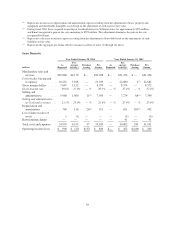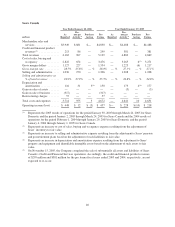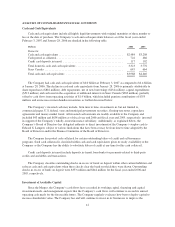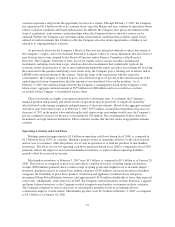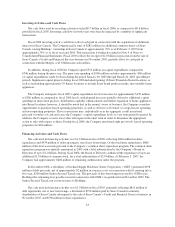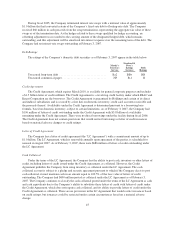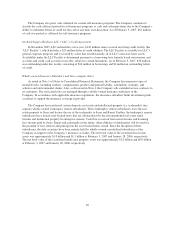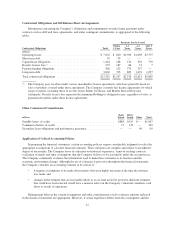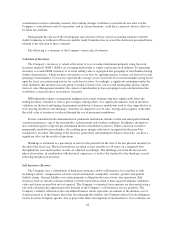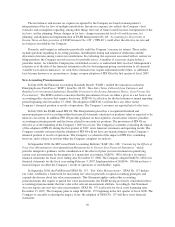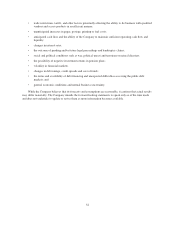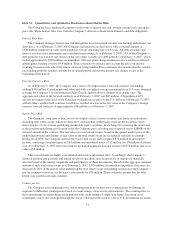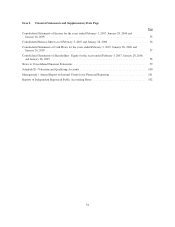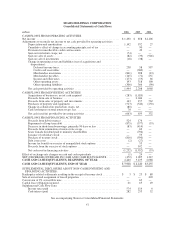Sears 2006 Annual Report Download - page 47
Download and view the complete annual report
Please find page 47 of the 2006 Sears annual report below. You can navigate through the pages in the report by either clicking on the pages listed below, or by using the keyword search tool below to find specific information within the annual report.
Contractual Obligations and Off-Balance-Sheet Arrangements
Information concerning the Company’s obligations and commitments to make future payments under
contracts such as debt and lease agreements, and under contingent commitments, is aggregated in the following
tables.
Payments Due by Period
Contractual Obligations Total
Within
1 Year
1-3
Years
4-5
Years
After 5
Years
millions
Operating leases ....................................... $ 7,023 $ 820 $1,390 $1,038 $3,775
Short-term debt ........................................ 95 95 — — —
Capital lease obligations ................................ 1,444 148 274 252 770
Royalty license fees(1) ................................... 273 187 66 13 7
Pension funding obligations .............................. 828 192 379 257 —
Long-term debt ........................................ 3,662 705 809 1,091 1,057
Total contractual obligations ............................. $13,325 $2,147 $2,918 $2,651 $5,609
(1) The Company pays royalties under various merchandise license agreements, which are generally based on
sales of products covered under these agreements. The Company currently has license agreements for which
it pays royalties, including those to use the Jaclyn Smith, Joe Boxer, and Martha Stewart Everyday
trademarks. Royalty license fees represent the minimum Holdings is obligated to pay, regardless of sales, as
guaranteed royalties under these license agreements.
Other Commercial Commitments
millions
Bank
Issued
SRAC
Issued Other Total
Standby letters of credit ............................................. $888 $119 $— $1,007
Commercial letters of credit .......................................... 71 178 — 249
Secondary lease obligations and performance guarantee .................... — — 90 90
Application of Critical Accounting Policies
In preparing the financial statements, certain accounting policies require considerable judgment to select the
appropriate assumptions to calculate financial estimates. These estimates are complex and subject to an inherent
degree of uncertainty. The Company bases its estimates on historical experience, terms of existing contracts,
evaluation of trends and other assumptions that the Company believes to be reasonable under the circumstances.
The Company continually evaluates the information used to make these estimates as its business and the
economic environment change. Although the use of estimates is pervasive throughout the financial statements,
the Company considers an accounting estimate to be critical if:
• it requires assumptions to be made about matters that were highly uncertain at the time the estimate
was made, and
• changes in the estimate that are reasonably likely to occur from period to period or different estimates
that could have been selected would have a material effect on the Company’s financial condition, cash
flows or results of operations.
Management believes the current assumptions and other considerations used to estimate amounts reflected
in the financial statements are appropriate. However, if actual experience differs from the assumptions and the
47


